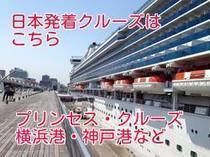The introduction of a lifestyle of "travel" in one's leisure time, using Hollywood's medium of film and television to play the role of an aspiring star, had a powerful impact on the American psyche. We had entered an era in which the image of Hollywood stars enjoying their lavish holidays in Paris and London in Europe and in the luxury resort city of Palm Springs in Japan became the focus of family reunions through the successive publication of lifestyle magazines, TV programs, and movies.
This new lifestyle was synergistically stimulated by the experience of travel and fashion. It created new values of life. New and unknown worlds were opening up in the conversation of the tea room. They unconsciously superimposed themselves on the events and romances in these movies and TV shows and dreamed up new travel destinations (destinations and tourist attractions).
As a result of World War II, the victorious Americans turned their attention to Europe. Before the war, the film industry, centering on Hollywood, promoted overseas production using studios in London and Italy, partly because the high dollar at the time made it cheaper to film on location overseas than to build studios in the U.S., including labor costs.
The number of people of that generation who admired the visual stage and theme and the new sophisticated Italian and French fashion increased. While actively engaging in overseas location shooting. With advances in editing technology, new film techniques, mainly compositing studio and location films, seemed fresh to the general American audience.
To create this European atmosphere, she speaks English with a European accent. Actress Audrey Hepburn plays a major role. She appeared in many new love stories set in Europe, and the music behind the scenes, with big bands such as Gershwin and Mancini, added color. In 1953, Hepburn appeared in William Wyler's "Roman Holiday" against the backdrop of the many ruins of Rome, which showed Americans not only the new lifestyle, but also the importance of culture and history.
Eddie Albert, who later appeared in the film, told me that the plot itself was refreshing in its longing for the Europe of their ancestors, especially the historical landscapes and the discovery of a white society that was different from the American one. It was said to have opened the eyes of Americans of the time to European fashions. He also said that this kind of stimulus pushed them toward a postwar consumer economy. Certainly, Audrey Hepburn was the spark that ignited the "Givenchy" boom through the later movie "Charade" and others.
Around the same time, other films directed by David Lean and Katharine Hepburn, such as "Travels" (Summertime: 1955), set in Venice, made American women increasingly long for Europe, including Italy. There were always "love stories" involved, including Italian and French. Speaking of Italy, there was also Vivien Leigh's "The Roman Spring of Mrs. Stone (1961). This was also a story of sightseeing in Rome and a love story woven together there.
The special longing of Americans for Europe at that time was seen in the French boom of the 1960s, and Hollywood films could not tell a love story without France. The American in Paris, Gentlemen Prefer Blondes, Sabrina the Beautiful, Death in Paris on a Rainy Morning, and Late Afternoon Affair excited many Americans, especially the ladies.
If you look across the Pacific Ocean, you will see the exotic Hawaii (which became the 50th state of the U.S. on August 21, 1959), which was thought to be a foreign country beyond, and "local" exploration TV programs such as "Hawaiian Eye" (1959) were also a big hit.
Speaking of Hawaii, even the movie "Blue Hawaii" (1961), starring Elvis Presley, stimulated the burgeoning number of West Coast visitors. Love is a Many - Splendored Thing (1955), set in Hong Kong at a time when the Korean War had focused attention on Asia, is also said to have impressed American audiences with a new, albeit different, world from Western culture through American theatrical films.
The development from studio films to location films also influenced the "007" series, which was adapted into films in the 1960s. The Cold War spy wars were enough to open Americans' eyes to other countries.
The tension between East and West during the Kennedy era also helped, and films such as "From Russia With Love (1957)" and "Goldfinger (1964)" incorporated new areas of exotic culture and action that were different from the traditional Westerns and other films that dealt with America's frontier history. The "foreign" setting attracted many fans.
The Japanese location of "007 Dies Twice (1967)" gave American moviegoers an impression of Japan after the Tokyo Olympics as the "Rising Sun. NYK's Akita Maru was also in the film.
In the early 1980s, "Shogun" (starring Japan's Toshiro Mifune and Yoko Shimada), aired on NBCTV, was a big hit and stimulated conversation at American family reunions. Later, in 1986, "Gung Ho" (Japanese title: Kutsuki Nippon Kabushiki Kaisha), a comedy adaptation of "Japan-U.S. Cultural and Economic Friction" starring Michael Keaton, became a hit and instilled a prejudiced view of the Japanese in many Americans.
【このカテゴリーの最新記事】
- no image
- no image
- no image
- no image
- no image
- no image




















